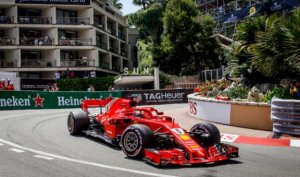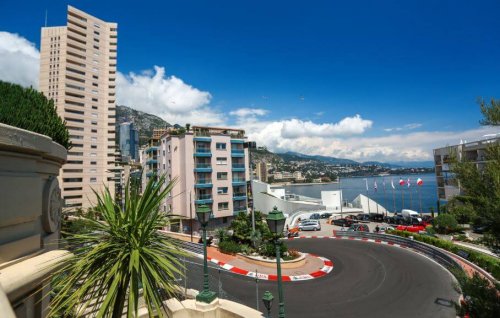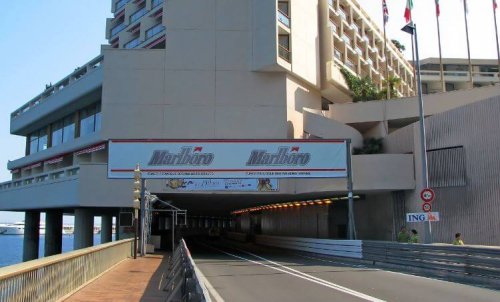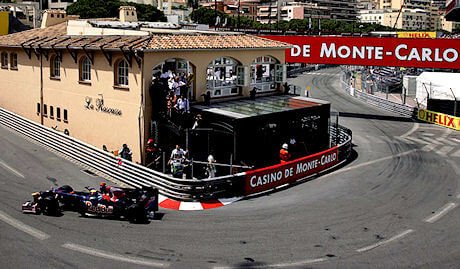The Famous Corners of the Circuit de Monaco

Circuit de Monaco
The weekend of the Grand Prix Circuit de Monaco is one of the most awaited by Formula One fans all over the world. This circuit has been part of the Formula One calendar since 1950. And so, in that trajectory, each of the corners has accumulated a piece of this sport’s history.
Sainte Devote
This is the first corner after the start of the race. It consists of an increasingly narrow curve, and so it causes the cars to almost touch one another from the beginning.
Beau Rivage
This left turn corner is a tough one considering that the drivers arrive at it at very high speeds, thus they must break abruptly. Similar to the previous corner, this one funnels the cars in a way that the drivers must maneuver to turn well.
At this point of the Circuit de Monaco, there’s a famous bump on the road at the exit of the casino. The cars must make evasive maneuvers to avoid hitting this bump. Curiously, it has become a staple for this race track and has never been fixed.
Mirabeau
This corner receives its name from the hotel that is located there. The Mirabeau is a 90-degree turn, that’s also on a downhill slope and turns right. Thus, making it a very important turn in the Circuit de Monaco.
Loews
One of the most famous corners of the Circuit de Monaco and it gets its name from a famous hotel that used to be in that location. This corner consists of a sharp 180-degree turn that is challenging for even the most experienced and skillful driver.

Portier
After slowing down to take the Loews turn, the drivers now can accelerate to take the Portier. This right-hand turn is located just before the tunnel. Because it’s right next to the sea, the Circuit de Monaco has made it more and more secure.
This isn’t just a baseless safety precaution, in 1995 Ascari took the turn too fast and finished in the water. Fortunately, he was rescued and survived the incident.
Tunnel
The tunnel is another of the symbolic parts of the Circuit de Monaco, and also the fastest part of the race. Because of the high speeds that the cars reach during this part of the race, it’s one of the most dangerous. In 2004, Alonso and Ralph Schumacher crashed in this area and ruined both of their cars.

Nouvelle Chicane
This corner of the circuit is designed to make the drivers slow down after they exit the tunnel. This chicane is located adjacent to the port, which is the most appropriate place to pass. However, most don’t get the chance to pass. Additionally, this chicane has witnessed many accidents, such a the one Sergio Pérez experienced in 2011.
Tabac
Tabac is the most technical curve in the circuit. And so, mistakes here are quite dangerous. It’s a fast curve where the experience and skill of the driver makes a difference.
Swimming pool complex
This part of the race is a chicane, a very fast one, thus making the drivers use aggressive maneuvers. However, many drivers can’t handle this maneuver and end up hitting the barrier.
La Rascasse
The next to last corner of the Circuit de Monaco involves a sharp break on a slope. Performing this turn correctly is key in order to finish the lap well.
This turn was the center of attention during the 2006 season when Michael Schumacher stopped his car and caused a yellow flag. Thereby impeding his opponents to improve their times during that lap.

Anthony Nogues
And here is the awaited last run of the Circuit de Monaco, the Anthony Noghes. Named after the founder of the Monaco Grand Prix, this curve is one of the most famous. This curve requires technical ability that, if driven incorrectly, the car can end up against the barrier.
Circuit de Monaco
The weekend of the Grand Prix Circuit de Monaco is one of the most awaited by Formula One fans all over the world. This circuit has been part of the Formula One calendar since 1950. And so, in that trajectory, each of the corners has accumulated a piece of this sport’s history.
Sainte Devote
This is the first corner after the start of the race. It consists of an increasingly narrow curve, and so it causes the cars to almost touch one another from the beginning.
Beau Rivage
This left turn corner is a tough one considering that the drivers arrive at it at very high speeds, thus they must break abruptly. Similar to the previous corner, this one funnels the cars in a way that the drivers must maneuver to turn well.
At this point of the Circuit de Monaco, there’s a famous bump on the road at the exit of the casino. The cars must make evasive maneuvers to avoid hitting this bump. Curiously, it has become a staple for this race track and has never been fixed.
Mirabeau
This corner receives its name from the hotel that is located there. The Mirabeau is a 90-degree turn, that’s also on a downhill slope and turns right. Thus, making it a very important turn in the Circuit de Monaco.
Loews
One of the most famous corners of the Circuit de Monaco and it gets its name from a famous hotel that used to be in that location. This corner consists of a sharp 180-degree turn that is challenging for even the most experienced and skillful driver.

Portier
After slowing down to take the Loews turn, the drivers now can accelerate to take the Portier. This right-hand turn is located just before the tunnel. Because it’s right next to the sea, the Circuit de Monaco has made it more and more secure.
This isn’t just a baseless safety precaution, in 1995 Ascari took the turn too fast and finished in the water. Fortunately, he was rescued and survived the incident.
Tunnel
The tunnel is another of the symbolic parts of the Circuit de Monaco, and also the fastest part of the race. Because of the high speeds that the cars reach during this part of the race, it’s one of the most dangerous. In 2004, Alonso and Ralph Schumacher crashed in this area and ruined both of their cars.

Nouvelle Chicane
This corner of the circuit is designed to make the drivers slow down after they exit the tunnel. This chicane is located adjacent to the port, which is the most appropriate place to pass. However, most don’t get the chance to pass. Additionally, this chicane has witnessed many accidents, such a the one Sergio Pérez experienced in 2011.
Tabac
Tabac is the most technical curve in the circuit. And so, mistakes here are quite dangerous. It’s a fast curve where the experience and skill of the driver makes a difference.
Swimming pool complex
This part of the race is a chicane, a very fast one, thus making the drivers use aggressive maneuvers. However, many drivers can’t handle this maneuver and end up hitting the barrier.
La Rascasse
The next to last corner of the Circuit de Monaco involves a sharp break on a slope. Performing this turn correctly is key in order to finish the lap well.
This turn was the center of attention during the 2006 season when Michael Schumacher stopped his car and caused a yellow flag. Thereby impeding his opponents to improve their times during that lap.

Anthony Nogues
And here is the awaited last run of the Circuit de Monaco, the Anthony Noghes. Named after the founder of the Monaco Grand Prix, this curve is one of the most famous. This curve requires technical ability that, if driven incorrectly, the car can end up against the barrier.
This text is provided for informational purposes only and does not replace consultation with a professional. If in doubt, consult your specialist.








